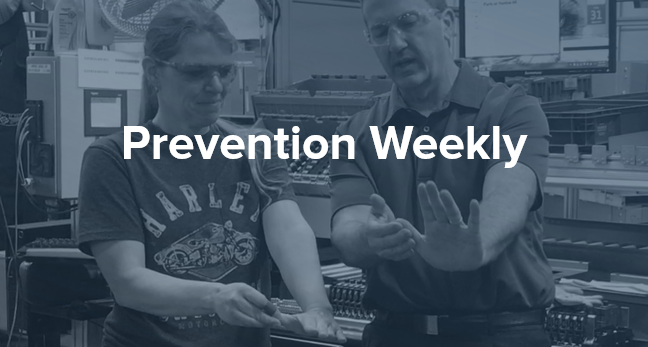Prevention Weekly delivers the best ergonomics, workplace athlete health, and safety leadership news right to your inbox every week.
Featured Article
A Safety Manager’s Guide to Early Intervention
Imagine for a second that you have a crystal ball in your office. Through it, you can see the next three years of recordable injuries at your facility. Sue, carpal tunnel. Joe, back strain. Tom, thoracic outlet compression. And the list goes on and on. Here’s the thing. You don’t need a crystal ball to uncover the next three years of MSDs at your facility. What you need is early intervention.
A Safety Manager’s Guide to Early Intervention
Ergonomics
9 Ergonomic Tips for Synchronizing Your Work Station and Office Chair
“Did you know a desk job can be hazardous to your health? Sitting too much emerged as a serious health issue in the U.S. last year. Instead of sitting all day, consider alternating standing and sitting at work. Many new adjustable desks make this easier than ever.”
9 Ergonomic Tips for Synchronizing Your Work Station and Office Chair
Experts Weigh in on the Importance of Office Ergonomics
“Employers should consider replacing traditional sedentary cubical desks with standing desks, memory foam mats and active ergonomic seating to support healthier work environments. If organizations are hesitant to take on an entire office redesign they can start by simply adding stand-up collaboration areas and designating walking meeting pathways to promote wellness.”
Experts Weigh in on the Importance of Office Ergonomics
Workplace Athlete Health
Incorporating Movement Into Your Workday
“Rather than one posture or the other, research suggests alternating between sitting and standing as too much of either can create strain on the body. So, look around your office and consider what you can do to stand and move more.”
Incorporating Movement Into Your Workday
Free Injury Prevention Handout — Prevent Elbow Injuries
“Tennis Elbow” and “Golfer’s Elbow” are common terms for soft tissue inflammation disorders of the elbow. The medical terms typically used for these disorders are lateral and medial epicondylitis respectively. Each day we use the muscles and tendons that originate at the elbow to perform various upper extremity tasks. The physical stress and strain to the elbow muscles and tendons can produce microscopic wear and fatigue to these tendons and muscles. This is completely normal.As long as the amount of fatigue is lower than the body’s ability to recover, the elbow soft tissues will remain healthy.But too much strain and fatigue, coupled with too little repair can lead to an inflammation disorder of the elbow.
Free Injury Prevention Handout — Prevent Elbow Injuries
Safety Leadership
What Should You Stop Doing to Improve Safety Performance and Culture?
“What should you not do or stop doing that will improve safety performance and culture? These are difficult questions for most leadership teams to answer and agree on. There tends to be a common belief we should always do more in safety. We want to improve, so we need to do more. We had an injury or incident, so we need to do more. We want to be top-tier, so we need to do more. Rather than always trying to do more, the goal should be to do better. More isn’t always better. Better is better.”
What Should You Stop Doing to Improve Safety Performance and Culture?
Ergonomics Plus solutions help proactive safety teams prevent musculoskeletal injuries and advance employee well-being.
